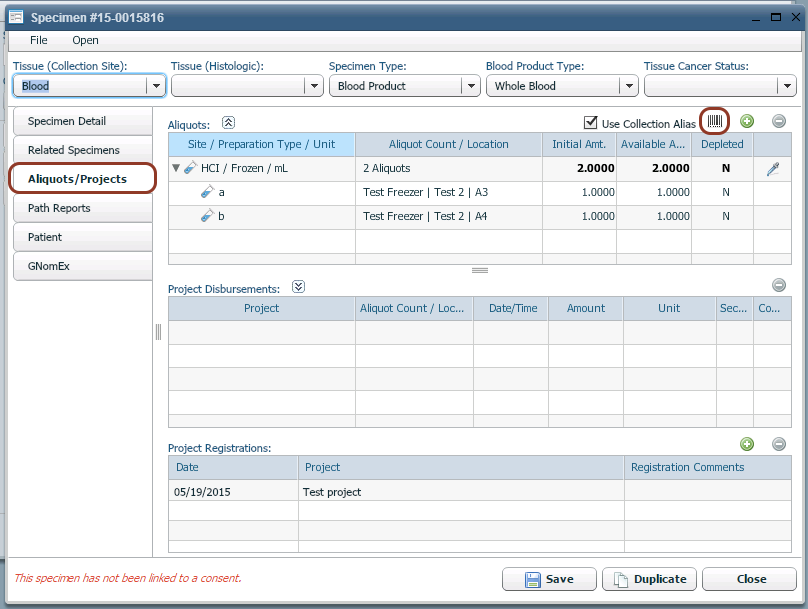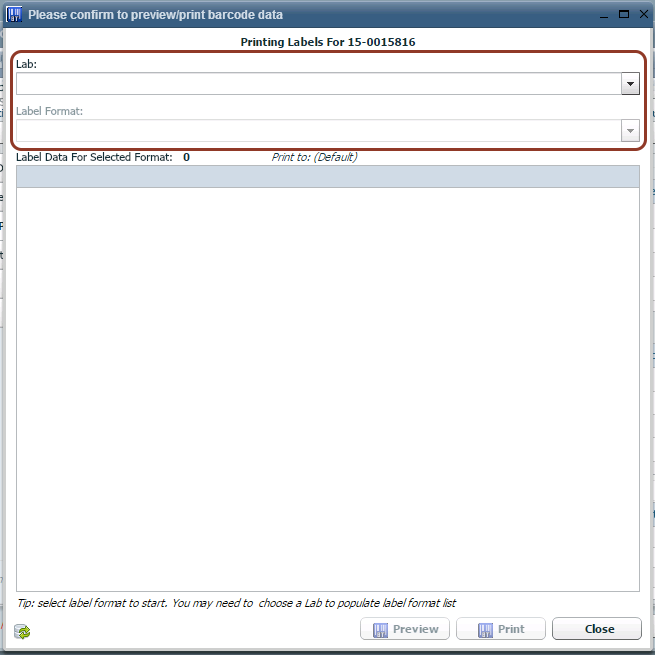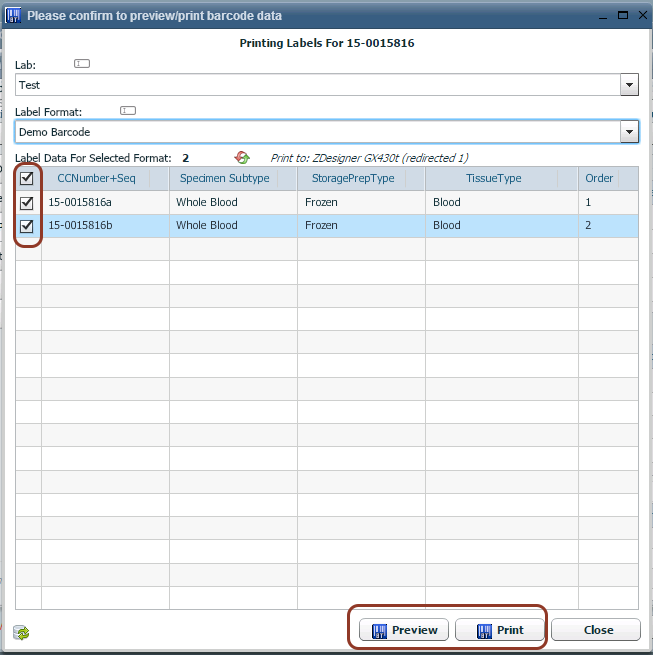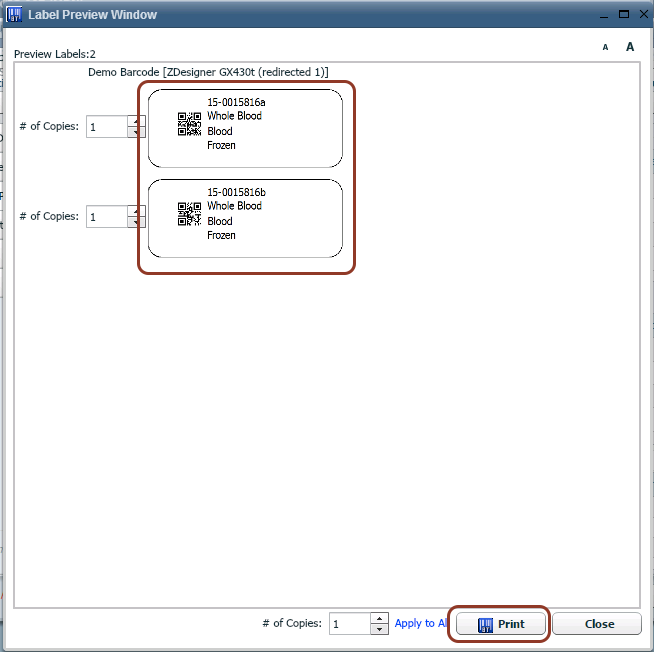- Welcome
- Use case
- Getting Started
-
Searching Records
- Performing a Basic Search
- Performing an Advanced Search
- Performing a List Search
- Performing a Keyword Search of UUMC Pathology Reports for all Patients in the Database
- Performing a Keyword Search of UUMC Pathology Reports for the Patients Associated with a Specific Set of Specimens
- Restrictions on Searches
- Reports
-
iQ Tool
- Adding Columns to a Query
- Starting the iQ Tool
- iQ Tool Window
- Current Query Data Group
- Saved Queries List
- Top Portion of the Selected
- Display or Report Columns Section
- Find/Filters Section
- Running a Preexisting Query
- Creating a Query
- Create Query Window
- Copying and Altering a Preexisting Query
- Removing Columns from a Query
- Editing Column Parameters in a Query
- Changing the Order of Columns in a Query
- Adding Filters to a Query
- Editing Filters in a Query
- Ways of Comparing Data
- Removing Filters From a Query
- Results Window
- Application Data Structure
- Application Database Fields Alphabetical List
- Application Datatree
- Field Paths List for the iQ Tool
-
Adding Specimens to the Database
- Adding a Single Specimen using the Add Specimen Wizard
- Adding a Batch of Specimens using the Add Specimen Expert Tool
- Saving a Batch of Specimens to be added as a Work in Progress
- Finishing a Work in Progress Batch
- Printing Barcodes for a Specimens in a Batch added using the Add Specimen Expert Tool
- Customizing the Add Specimen Expert Tool to Streamline Specimen Batch Entry
- Changing which Box an Add Expert Template Points for Adding Storage
- Importing FFPE Samples from UUMC
- Entering and Editing Specimen Records
- Transformations
- Specimen Disbursement and Registration
- Reports and Records
- Adding a Pathology Report to a Specimen Record
- Performing a DEXT Import of a Pathology Import
- Checking on the status of your DEXT Import Request
- Adding a Medical Record to a Specimen Record
- Editing Patient or Collection Records
- Editing Collection Records
- Editing Patient Records
- Diagnoses
- Adding a Diagnosis to a Patient Record
- Linking an Existing Diagnosis to one or more Collections
- Linking a Collection to a Diagnosis
- Recording a Consent for a Patient
- Reviewing a Patient's Consents
- Uploading a Patient's Consent Form
- Managing Patient Consents
- External (to itBioPath) Data Sources
- Managing Dictionaries
-
Storage
- Editing Aliquots
- Connecting a Barcode Label Printer to itBioPath
- Removing a Barcode Label Printer from itBioPath
- Freezer Management
- Viewing the Contents of a Box in a Freezer
- Accessing the Specimen Record for the Specimen associated with an Aliquot
- Editing Box Details
- Adding a New Box to a Freezer from the Add Aliquot Window
- Managing Protocols, Projects, and Related User Permissions
- Window, Tab, and Field Descriptions
- Miscellaneous
After a specimen is stored in the database, the specimen containers may need to be labeled with a barcode label. itBioPath can be used to generate a barcode that identifies the sample and storage unit by its Cancer Center Number and Storage Sequence letter. The process below describes how to generate a barcode for a specimen that is already in the database. The process is similar for printing barcodes for specimens while they are being added to the database, either using the basic specimen add wizard or using an Add Specimen Expert template. To generate a barcode:
- Open the specimen record. See Editing Specimen Records for instructions on how to do this.
- Select the Aliquots/Projects tab.
- Click
 above the Aliquots table. The Barcode Print Preview dialog will open, displaying a preview of what the barcode label will look like when printed.
above the Aliquots table. The Barcode Print Preview dialog will open, displaying a preview of what the barcode label will look like when printed.

- The printing window will open. Select the Lab printer and the Label Format from the dropdowns.

- Once the selections have been made, the Label Data will display the available aliquots for label printing. Aliquots will all be selected for printing by default. Click to box next to the aliquot to uncheck it. An uncheck aliquot will not be printed. Click
 to view the labels before printing or click
to view the labels before printing or click to print the labels.
to print the labels.

- After clicking
 , a new window will open. The aliquot labels will be displayed. Adjust the amount of label copies by using the # of Copies field. Click
, a new window will open. The aliquot labels will be displayed. Adjust the amount of label copies by using the # of Copies field. Click to print the labels. The barcode label is designed to print on regular paper or on a special barcode label printer.
to print the labels. The barcode label is designed to print on regular paper or on a special barcode label printer.





